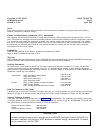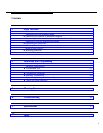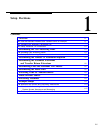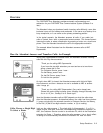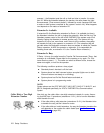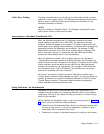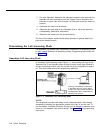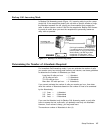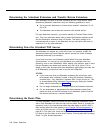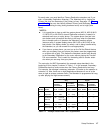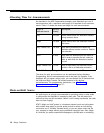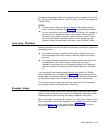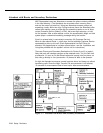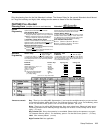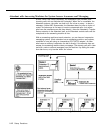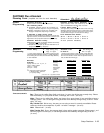
Determining the Attendant Extensions and Transfer Return Extensions
Each Attendant connects to its own extension jack on a 206 module. When
determining Attendant extensions, keep the following guidelines in mind:
■
■
Do not connect Attendants to "power failure transfer" extensions 10, 16,
22, or 28.
The Attendant cannot share an extension with another device.
For each Attendant extension, you need to identify its Transfer Return exten-
sion. This is the extension where calls go when the Attendant transfers a call
and the Destination extension does not answer. The factory setting is for
unanswered calls to return to the Attendant; but you can have calls return to
extension 10 or any other extension.
Determining Lines the Attendant Will Answer
The Attendant can answer any or all of the lines. For example, at ABC the
Attendant answers all lines except the owner’s private line, which is always
answered personally by a secretary.
If you have more than one Attendant, decide which lines each Attendant
should answer. You can set up your Attendants so a particular line is an-
swered by one or more Attendants. When making your decision, keep in mind
that an Attendant can answer and transfer only one call at a time. For ex-
ample, a mail order business with three Attendants might assign the order line
to all Attendants, and all other lines to only the third Attendant.
NOTES:
■
If you have more than one Attendant answering the same lines, each
must answer after a different number of rings (for example, Attendant 1
answers after 1 ring, Attendant 2 answers after 2 rings, and so on). This
is accomplished during Attendant Programming by setting the Answer
Delay; see the instructions on page 2-8.
■
■
Do not assign dedicated fax or modem lines to the Attendant extension.
For two businesses or departments that have separate outside lines,
assign the lines for the first business to one Attendant, and the lines for
the second business to a second Attendant.
Determining the Route Plan
For each Attendant, identify its routes and their respective Destination exten-
sions. Each Attendant can have as many as ten routes. Route 0, typically the
operator’s route, is the one followed when the caller takes no action, dials 0
after hearing either the initial greeting or the Transfer Fail Announcement, or
enters an invalid extension or route (see "Invalid Extensions and Routes" on
page B-3). The other nine routes are optional. To avoid confusing your callers,
it is best to give the caller no more than 5 routes. You may also want to assign
Route 1 to your busiest department.
1-6 Setup Decisions



